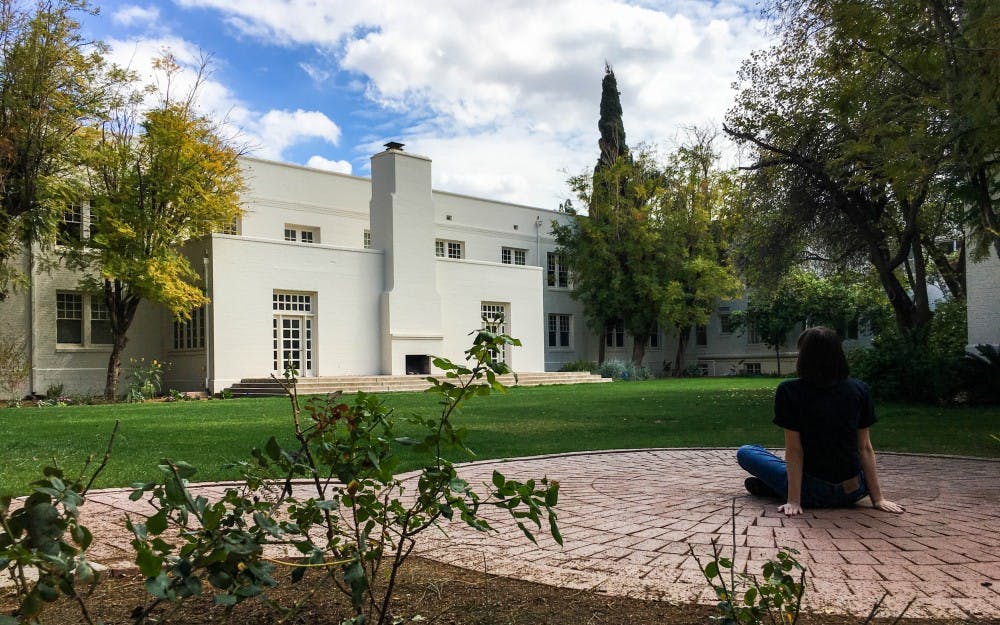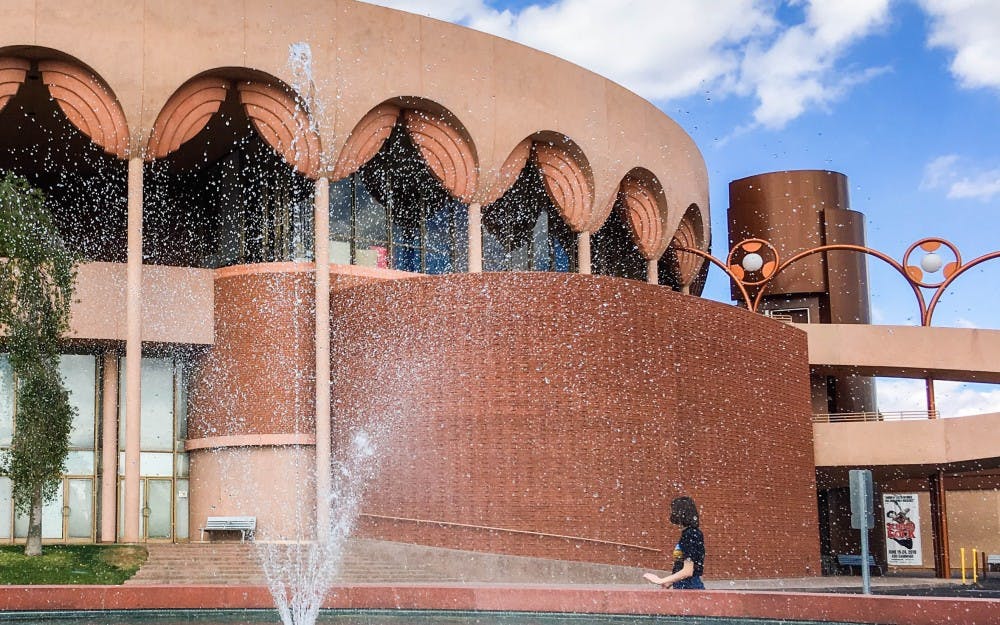The National Register of Historic Places lists more than 80,000 locations in its archive of culturally notable landmarks within the United States. Somewhere in this registry is an iconic ASU landmark: the Grady Gammage Memorial Auditorium.
The auditorium’s history precedes its opening night in 1964 — seven years prior, Grady Gammage, the former ASU president and namesake of the building, had a vision for ASU and he enlisted his long-time friend, internationally known architect Frank Lloyd Wright, to bring it to fruition.
When they began to outline the construction of the building, ASU was known as Arizona State College. However, under Gammage's presidency, the school rerouted from being a teachers' college to a fully accredited state university.
In 1958 Gammage oversaw the school’s progression through the tumult of Proposition 200 — a bid to formally change the college’s name to Arizona State University. Bolstered by unrelenting support from the student body and surrounding community, the proposition was passed by the state legislature with a two-to-one margin.
An architect by trade and philosopher by nature, Wright had plotted himself on the national celebrity spectrum through decades spent composing some of the most critically acclaimed structures in modern American architecture.
By the time Wright dusted off the unused blueprints of a design for an opera house in Baghdad, Iraq to re-purpose them for the construction of Gammage, he had already created over 500 architectural works.
At 80 feet high and encompassing an area of 75,000 square feet, Gammage Auditorium marked the culmination of Wright’s illustrious career in spectacular fashion.
Though the two men both died in 1959, Wright’s right-hand man William Wesley Peters oversaw the completion of the auditorium, which opened five years later.
Jose Bernardi, who teaches interior design classes at ASU’s Herberger Institute, said the result is a cohesive landmark structure that exemplifies the progressiveness of Wright's style and the geographical tones of the building's Arizonan surroundings.
“For an individual like Wright, who was so interested in the particularities of design … it's very interesting to see that the concept he had for (the auditorium) in a different country could be the DNA for a building in a different context, but also a desert environment," Bernardi said. "It's interesting for me as an architect because here you see the power of an idea."'
Throughout the years Gammage Auditorium has hosted internationally renowned dance companies, performances and musicians such as B.B. King, Bruce Springsteen and Elton John.
Over 50 years after its completion, Gammage Auditorium continues to make up the cultural bedrock of Tempe. The award-winning, Lin-Manuel Miranda-penned musical "Hamilton" ended a month-long run at Gammage on Feb. 25, 2018.
Read More: Tony Award-winning musical 'Hamilton' debuts at ASU Gammage
For the thousands of students and faculty that traverse ASU’s sprawling campuses every day, the auditorium’s namesake is more than a point of geographic reference. The auditorium hosts a variety of music classes and student performances and is an integral part of the University's functions and identity.
To Grady Gammage Jr., Gammage's son and a senior sustainability scholar for the ASU Julie Ann Wrigley Global Institute of Sustainability, his father's legacy was to be expected of a man who had wholly given himself to the institution.
“He was a little like Michael Crow in that he really wanted to transform ASU into something greater,” Gammage said. “It came from such humble beginnings as a normal school and a teachers' college, and he’d seen it through all of that. I think he saw (the auditorium) as the next step in that evolution — he saw this as the next step in making ASU something more than it had been.”
Carrying on in his father’s footsteps, the younger Gammage continues maintaining a active role within the University. Aside from his work at the sustainability institute, he is a senior research fellow for the Morrison Institute for Public Policy, a teacher in the W.P. Carey Master of Real Estate Development program and a teacher of land use regulation in the Sandra Day O’Connor College of Law.
Besides Gammage Auditorium the legacy of the Gammage family can be seen in two other ASU ladmarks: the Virginia G. Piper Writer’s House and Dixie Gammage Hall.
The former, located on the corner of Palm Walk and Tyler Mall, served as the Gammage family’s home before being converted into the Virginia G. Piper Center for Creative Writing, which is also included in the National Register of Historic Places.
Dixie Gammage Hall, named in remembrance of the Grady Gammage Sr.’s first wife Dixie Dees Gammage, opened in 1941.
Today, the Hall hosts several offices of ASU’s Herberger Institute for Design and the Arts, including that of Herberger Dean Steven Tepper, whose office offers a panoramic view of the Hall’s courtyard, more popularly known as the Secret Garden.
“I think there’s a nice balance between feeling grounded in the history of a place and feeling confident in projecting new ideas into the future,” Tepper said. “The fact that we can be (here), that is a historically important space, I think it’s a nice combination … we’re happy to be able to work in the legacy of the Gammage family.”
Reach the reporter at sleal2@asu.edu or follow @journaslam on Twitter.
Like The State Press on Facebook and follow @statepress on Twitter.





